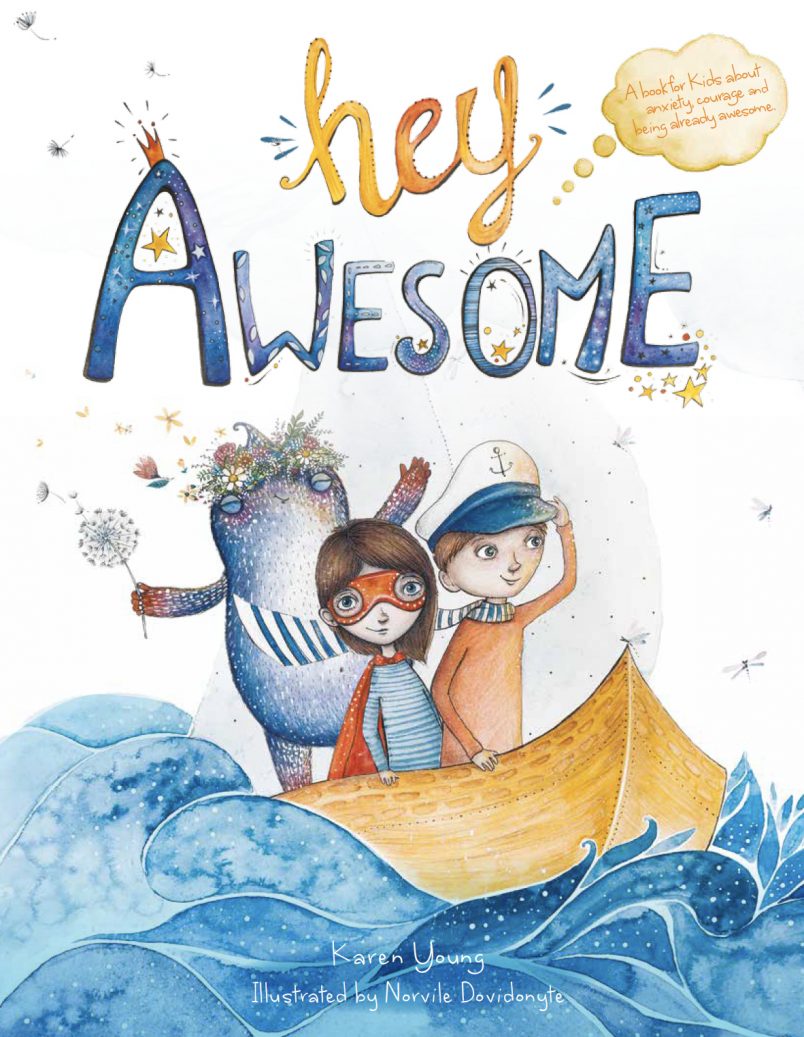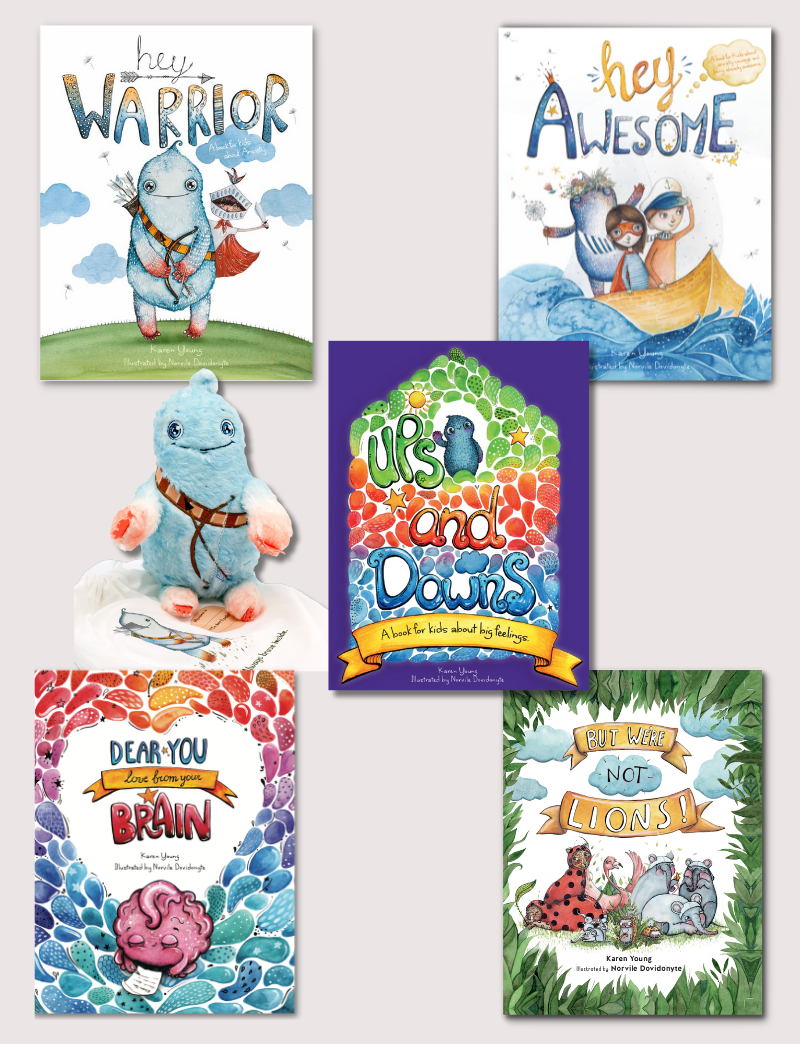But We’re Not Lions!
The animals were mighty and magnificent, but they were miserable! For way too long, they’d been forced to become something that didn’t feel right – something that felt too much like bad days and scratchy things. The animals needed a hero, or someone to show them that a hero was in each of them all along.
A book about boundaries, peer pressure and self-acceptance – and a reminder for all kids that the very best thing about them, is them.
From: USD $13.72
You may also like…
-
-
-
USD $72.06 + This product has multiple variants. The options may be chosen on the product page
The Best Ever Resource Set (Save 15%)
(Save 15%) This set includes the large 40cm amygdala warrior plushie (the cuddliest bodyguard),






Tracey B (verified owner) –
A story that simplifies the feelings for all ages.
Sarah M (verified owner) –
As expected a fabulous book – I recommend your books to all my clients and their parents
SandyP (verified owner) –
Karen’s books are always favorites with my child clients and their families, and this is no exception. What a fun and humorous way to learn about boundaries!
Sarah (verified owner) –
The art is gorgeous and the story is sweet and accessible to everyone.
Geraldine S (verified owner) –
I loved this story and the characters. It was very timely for my grandkids as they were having some issues with boundaries. Well explained with a great message. I passed this on to my son to read to his kids and they loved the story.
Beautifully presented.
Solen (verified owner) –
Thank you for this book!!! It was a fun read :)) This and more books like this to come will help children around the world and help immensely with their healthy development.
Peter S (verified owner) –
These books are all truly wonderful! Just what we were looking for! Thanks! 🙂
Lupe S (verified owner) –
Wow!! Love your books. Everything I have order has been beautifully and carefully wrapped. The books and their messages are amazing. I work with young people and they help them understand concepts we are learning in therapy so much better. Thank you.
Erin (verified owner) –
Gorgeous book and illustrations that teaches the value of self acceptance and boundaries in a really fun way. I really appreciate the conversation prompters at the back of all Karen’s books to help to guide parents/carers to discuss these really important topics with their children.
Susan R (verified owner) –
Excellent message! Compliments the strategy that I teach my students to use when someone says something hurtful to them; to put up their “invisible shield” to deflect the hurtful words. The “invisible shield” is positive self-talk: student’s strengths and positive qualities. This strategy empowers the student to focus on themselves, and not give power to the hurtful words or actions.
Carmen D (verified owner) –
Hi I was delighted to received books wrapped in lovely paper with a sticker sealing it. A lovely touch. Beautiful messages in this and another book I purchased. I would have like the pictures to be abit more colourful though to appeal to kids a little more. Pleased with my purchase
Robyn C –
Excellent child level explanation about acceptance and bullying giving the child excellent skills to deal with it on a day to day basis! Love the soft toy amygdala to cuddle too! It is a concrete object the child can hang on to so they can understand the abstract concepts of their brain!